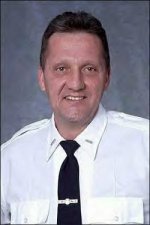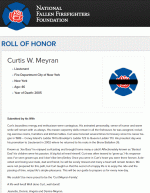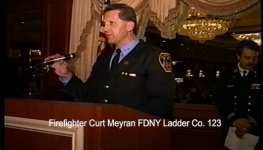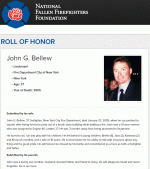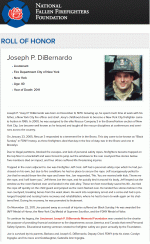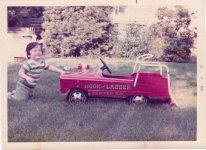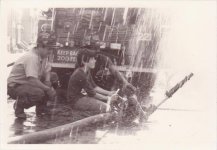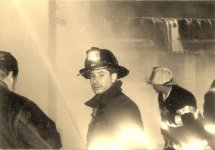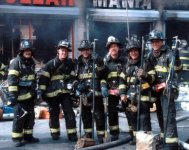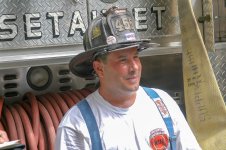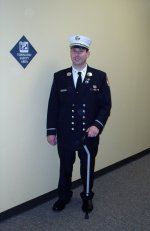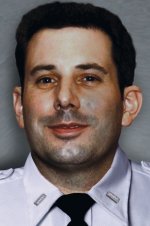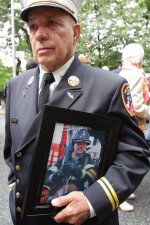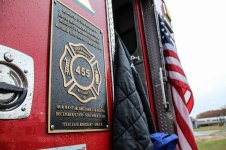FDNY Line of Duty Deaths
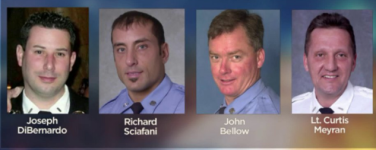 ·
·January 23, 2005 - Remembering FDNY Black Sunday…Multiple Firefighter LODDs
The call had come at 7:59 on a Sunday morning, the day after a January blizzard had shut down the city. There was still more than a foot of unplowed snow on East 178th Street off the Grand Concourse, and some of it was still swirling in 45-mile-an-hour gusts. Wind like that has a habit of working like gasoline on even the tiniest fires.
Five trucks from five companies inched through the snow to converge on the tenement, a cookie-cutter version of thousands of other old buildings in the South Bronx. Engine 42 got there first; its men were stretching hoses from their truck and running them upstairs. Ladder 33 got there next, and a number of its men were sent to the third floor, where the fire was burning. The firefighters from Ladder 27 and Rescue 3 had arrived next; they were sent to the floor above the fire to clear it and keep the flames from spreading upward.
Diagram: Anatomy of the Fall
When the six men got to the fourth floor, they started searching from apartment to apartment, but they’d found no civilians (except the skinny guy and naked fat lady one of the guys saw hightailing it out of there just as they came up the stairs). Now they were in Apartment 4-L, feeling their way along the walls from room to room—six men loaded down with gear, sucking in air from their tanks—and soon they got turned around, lost in the smoke. Brendan Cawley, the probie with just a month on the job, kept seeing padlocks on the doors of every room and was confused; he hadn’t been around long enough to know how many apartments in this neighborhood had been converted into cheap, crowded rooming houses. This place had been chopped up, probably illegally. Random walls and carelessly thrown-up partitions created a maze.
The men were trying to make their way to the source of the heat surge, but among the locks and the walls and the smoke, they couldn’t seem to get there. And there was another problem: The men didn’t have working hoses. First, there was a frozen hydrant; then, something seemed wrong with some of the hoses themselves. The six men on the fourth floor couldn’t fight a fire they couldn’t find—and if any fire did come, they had nothing to fight it with.
At 8:26 a.m., Curt Meyran, the lieutenant in charge of the Ladder 27 crew, checked in on his radio. He was asked about the status of the fire on the fourth floor. “Slight extension, slight extension,” Meyran said—meaning they still saw just smoke, no fire.“Ten-four,” came the response.Somewhere between 18 and 23 seconds later—still 8:26 a.m., maybe even as the responder was talking—a turret of flame roared up though the floorboards. None of them saw it coming—in an instant, all six were pinned against the windows that faced the back. “We need a line on the floor above,” someone barked into the radio. “We have heavy fire on the floor above. Rescue to Battalion. Urgent.”
In the background, another voice—no one’s sure whose—could be heard: “We got no water!”
The flames formed a wall between the men and the apartment door. Walking out was no longer an option. Meyran called in a Mayday and he and Gene Stolowski and Cawley stuck their heads outside for air. At the windows next to them were two guys from Rescue 3, Jeff Cool and Joe DiBernardo. They had lost track of the sixth man, John Bellew. It was 17 degrees outside, but even as their faces were freezing, the men felt a scorching heat on their backs. Leaning out, they could see a fire escape two windows away—but it was too far for them to jump.
Meyran called in a Mayday at 8:29. Seconds later, DiBernardo radioed an outfit on the roof: “Brothers on the roof, you’re gonna need to send a rope over the side. Roof team—send a rope over the side to the two-four side of the building.” The flames were closer now. Jeff Cool could feel them at his neck. Cool had a wife and two kids. Meyran had a wife and three kids. Bellew had a wife and four kids. Stolowski had a daughter, and his wife was expecting twin girls in June. DiBernardo’s dad was a retired deputy fire chief. Cawley had an older brother who had died on 9/11.
Take the time to read both NIOSH reports and remember the sacrifice…
Fire Fighter Fatality Investigation Report F2005-03 | NIOSH | CDC
Career Lieutenant and Career Fire Fighter Die and Four Career Fire Fighters are Seriously Injured during a Three Alarm Apartment Fire - New York
Three veteran FDNY firefighters died in the LODD in Brooklyn, New York and the Bronx on Sunday January 23, 2005, a day that has become known as “Black Sunday” and called one of the saddest in fire department history. Two firefighters were killed and four others were badly hurt when they were forced to jump from a fourth-floor window of a burning building in the Bronx. Later, a third firefighter died after tackling a basement blaze in Brooklyn. Lt. Curtis Meyran, 46, of Battalion 26, and Firefighter John Bellew, 37, of Ladder 27, died after battling the Bronx blaze on East 178th Street in the Morris Heights section.
Three firefighters were in critical condition at St. Barnabas, and a fourth was in serious condition at Jacobi Medical Center. Six Bronx firefighters became trapped in the building while searching for people on the fourth floor. When the fire from the third floor broke through to the fourth, they were faced with a horrifying choice. They jumped out a fourth-floor window, knowing that they would be critically injured.
Firefighters Jeffrey Cool, Joseph DiBernardo, Eugene Stolowski, and Cawley were badly hurt in the Bronx fire. They were trapped on the fourth floor and were left with the life-or-death choice of leaping 50 feet or burning up. The Brooklyn firefighter, Richard Sclafani, 37, died at a hospital after being injured at a two-alarm fire in the East New York section.
It will forever be remembered as Black Sunday – and now a highly-critical FDNY report into the double-fatal fire reveals how so many things went wrong on that day.
Two firefighters died and four were critically injured when fire and smoke in an illegally partitioned apartment forced them to jump from a fourth floor window.
Jeanette Meyran, Firefighter’s Widow: “You have to envision that it turned badly in seconds.”
The FDNY Internal Report of the event documented details of a long list of mistakes made from the top brass down to the front line.
Its key findings include:
Failure to provide firefighters with escape ropes.
Failure to update operational procedures.
Inadequate training.
Failure to communicate level of danger to command.
Failure to thaw two frozen hydrants.
Water loss in main hose line.
Partitioned walls.
REMEMBER BLACK SUNDAY: January 23, 2005 was "black Sunday" in New York when FDNY Lt. Curtis W. Meyran (covering Ladder 27 that day) and FF John G. Bellew (Ladder 27) died in the Line of Duty at an apartment fire in the Bronx. Four other FF's were injured: Jeffrey Cool (Rescue 3) Joseph DiBernardo (Rescue 3), Brendan Cawley (Ladder 27) and Eugene Stolowski (Ladder 27). All 6 FF's were forced to jump from the 4th floor of an apartment building as they were trapped by the fire.
And, as you'll remember, at a separate incident in Brooklyn that day, just 3 hours after the Bronx fire, FF Richard T. Sclafani (Ladder 103) was killed in the Line of Duty after getting trapped in the basement while operating at a residential fire.
Career Lieutenant and Career Fire Fighter Die and Four Career Fire Fighters are Seriously Injured during a Three Alarm Apartment Fire – New York
SUMMARY
On January 23, 2005, a 46-year-old male career Lieutenant (Victim #1) and a 37-year-old male career fire fighter (Victim #2) died, and four career fire fighters were injured during a three alarm fire in a four story apartment building. The victims and injured fire fighters were searching for any potentially trapped occupants on the floor above the fire. The fire started in a third floor apartment and quickly extended to the fourth floor. Fire fighters had been on the scene less than 30 minutes when they became trapped by advancing fire and were forced to exit through the fourth floor windows. The six fire fighters were transported to metropolitan hospitals where the two victims were later pronounced dead.
NIOSH investigators concluded that, to minimize the risk of similar occurrences, fire departments should: review and follow existing standard operating procedures (SOPs) for structural fire fighting to ensure that fire fighters operating in hazardous areas have charged hoselines , ensure that fire fighters are trained on the hazards of operating on the floor above the fire without a charged hoseline and follow associated standard operating procedures (SOPs), ensure that fire fighters conducting interior operations provide the incident commander with progress reports ensure that team continuity is maintained during interior operations, review and follow existing standard operating procedures (SOPs) for incident commanders to divide up functions during complex incidents ensure that Mayday transmissions are prioritized and fire fighters are trained on initiating Mayday radio transmissions immediately when they become trapped inside a structure develop standard operating procedures (SOPs) for firefighting operations during high wind conditions provide fire fighters with the appropriate safety equipment, such as escape ropes, and associated training in jurisdictions where high-rise fires are likely. Additionally, building owners should follow current building codes for the safety of occupants and fire fighters.
INTRODUCTION
On January 23, 2005, a 46-year-old male career Lieutenant (Victim #1) and a 37-year-old male career fire fighter (Victim #2) were fatally injured during a three alarm fire in a four story apartment building. Four career fire fighters were also injured in the incident. The victims and injured fire fighters were searching for any potentially trapped occupants on the floor above the fire. The fire fighters became trapped by advancing fire and were forced to exit through the 4th floor windows. On January 25, 2005, the U.S. Fire Administration notified the National Institute for Occupational Safety and Health (NIOSH) of this incident. On March 21-24, 2005, four safety and occupational health specialists from the NIOSH Fire Fighter Fatality Investigation and Prevention Program investigated this incident. The NIOSH team met with the officials of the fire department, representatives from the Uniformed Fire Officers Association (UFOA) and the Uniformed Firefighters Association (UFA) which is affiliated with the International Association of Fire Fighters (IAFF). The team interviewed fire fighters and officers involved in the incident, examined photographs of the fireground, and reviewed other pertinent documents including the fire department’s investigative report. Two of the injured fire fighters were interviewed at the rehabilitation centers where they were still recovering from their injuries.
Fire Department
The fire department involved in this incident serves a metropolitan population of over eight million residents, in a geographic area of about 322 square miles. In 2004, the fire department consisted of 11,098 uniformed fire fighters and fire officers; 2,756 emergency medical technicians, paramedics and emergency medical services officers; 253 fire inspectors, 182 dispatchers, 100 fire marshals, and 989 administrative support personnel that served the community from over 300 fire stations and buildings. The fire department has extensive written standard operating procedures.
In 2004, the fire department responded to 27,718 structural fires, 22,437 non-structural fires, 180,047 non-fire emergencies, 189,162 medical emergencies, and 37,332 malicious false alarms. Included in the responses were 3,164 serious incidents: 2,908 first alarm, 204 second alarm, 32 third alarm, 15 fourth alarm, and 5 fifth alarm or greater incidents.
Typical engine company staffing is four fire fighters plus one officer (some engine companies have five fire fighters plus one officer); typical ladder and rescue company staffing is five fire fighters plus one officer. Each Chief Officer is assigned a firefighter to serve as an aide/driver. Fire fighters work the following shift: Day 1-2: 9:00 a.m. to 6:00 p.m.; Day 3: off; Day 4-5: 6:00 p.m. to 9:00 a.m.; Day 6-8: off.
Training and Experience
The State of New York requires that fire departments train career fire fighters to a level equivalent to National Fire Protection Association (NFPA) Level II. The state also requires 100 hours of annual in-service training.
The fire department requires all fire fighters to complete a 13-week training program at the department’s fire academy.1 Recruit fire fighters are instructed in the basics of fire suppression systems and fire fighting tactics. After graduating from the fire academy, the recruit fire fighters are certified fire fighter NFPA level II, and then go through a one year probationary period. Apparatus driver/operators (chauffeurs) are required to undergo an additional two-week training course after completing the probationary period. Refresher training is provided on each shift and multi-unit drills are routinely conducted to maintain proficiency.
Both victims had extensive training and fire fighting experience during their careers. Victim #1 was an officer with over 15 years of experience and victim #2 had over 10 years of fire fighting experience. Both of the victims’ training exceeded the minimum state training requirements.
Equipment and Personnel
There were 11 apparatus and 72 fire fighters on scene during the 1st alarm response prior to the fatalities. Additional units were dispatched in 2nd and 3rd alarms; however, only those units directly involved in operations preceding the fatal events are discussed in the investigation section of this report. The initial dispatch was at 0759 hours. Response listed in order of arrival included:
Engine 42 (officer and 5 fire fighters)
Ladder 33 (officer and 5 fire fighters)
Ladder 27 (officer/victim #1, victim #2, injured fire fighters #1 & #2, and 2 fire fighters)
Engine 46 (officer and 5 fire fighters)
Engine 75 (officer and 5 fire fighters)
Battalion Chief 19 and battalion fire fighter via battalion car, initial Incident Commander (IC) & Chief of
Operations 3rd Floor
Rescue 3 (officer, injured fire fighters #3 & #4, and 4 fire fighters)
Division Chief 07 and division fire fighter via division car, Incident Commander
Squad 41 (officer and 5 fire fighters)
Engine 48 (officer and 5 fire fighters)
Ladder 56 (officer and 5 fire fighters)
Engine 43 (officer and 5 fire fighters)
Ladder 59 (officer and 5 fire fighters) as Rapid Intervention Team (RIT)
Battalion Chief 17 and battalion fire fighter via battalion car, Chief of Operations 4th Floor
Due to the adverse weather conditions, the department had increased the staffing to five firefighters and an Officer in all Engines normally staffed by four firefighters and an Officer, and to six firefighters and an Officer in all five Rescue companies which are normally staffed by five firefighters and an Officer. The following units responding to this incident on the first alarm had the additional fifth firefighter: Engines 42, 46, and 75, and Rescue 3.
Approximately 150 fire fighters and 35 apparatus were on scene at 1010 hours when the fire was brought under control.
At the time of the incident, the victims were wearing their full array of personal protective clothing and equipment, consisting of turnout gear (coat and pants), helmet, Nomex® hoods, gloves, boots, and a self-contained breathing apparatus (SCBA) with an integrated personal alert safety system (PASS). The victims were also equipped with portable radios.
Structure
The structure involved in this incident was a four-story brick apartment building built in the 1920s. The building dimensions were 40 feet wide by 90 feet long. Each floor had three apartments. The building had a central stairwell that went from the first floor entrance all the way to the roof. Interior construction was plaster over wood lathe. There was an exterior fire escape on the rear western side of the structure. There was another exterior fire escape located on the front of the structure. There was an identical mirror image structure of the fire building attached to the west side with an air shaft located in the center of the two structures.
The apartments involved in this incident had been renovated into single room occupancies (SROs). The original apartments were partitioned into five separate bedrooms with a communal kitchen and bathroom. Each SRO had a single entrance and at the time of the incident each bedroom door was padlocked by the occupants for security. A new partition wall constructed with wood framing and covered with sheet rock limited access to the rear fire escape. The SRO renovation was considered a violation of local building codes since the structure did not have automatic fire sprinklers and no permits were issued for this construction .
According to fire investigators, the cause and origin of the fire was faulty electrical wiring in a receptacle in a 3rd floor apartment. The occupants of the apartment building were in the process of evacuating as fire department apparatus were arriving on scene.
Weather
The weather at the time of the incident included light snow with a temperature of 17°F and an average wind speed of 12 mph, with gusts up to 45 mph from the northwest. A blizzard leaving a snow depth of 13 inches occurred within hours preceding the incident. Weather conditions played a role in this incident with frozen hydrants, wind affecting the fire conditions, and a slightly delayed response time due to road conditions. The entire city block around the structure had not been plowed prior to the incident.
INVESTIGATION
On January 23, 2005, at approximately 0759 hours a fire was reported on the 3rd floor of a 4-story apartment building. Engine 42 was the first engine on the scene at 0803 hours and parked in front of the structure. Ladder 27 was the first due Ladder Company but arrived behind Ladder 33 due to traffic and weather conditions. Ladder 33 arrived at 0805 hours and positioned in front of the building. Ladder 27 arrived next and positioned at the northwest corner of the adjoining apartment building. Within the next two minutes, Engine 46, Engine 75, and Battalion 19 (the initial IC) arrived. Engine 46 was positioned at a hydrant approximately 320 ft west of the apartment and Engine 75 was positioned 160 ft east of Engine 42.
The Ladder 33 Lieutenant and two fire fighters made entry to the third floor just ahead of Engine 42’s hoseline and forced open the fire apartment door. Occupants of the 4th floor were beginning to evacuate down the stairwell past the fire apartment. The Ladder 33 crew kept the fire apartment door closed until occupants evacuated and the hose arrived.
As the Engine 42 Captain went up the apartment stairwell, he met several evacuating building occupants who told him the fire was on the 3rd floor. The Engine 42 crew started advancing an uncharged 1¾-inch hand line to the fire located within a third floor apartment. The crew observed moderate grayish white smoke pushing out the closed front door of apartment 3I. The Engine 42 driver/operator radioed to the interior crew that the hydrant was frozen.
The Ladder 27 Officer (Victim #1) and two fire fighters advanced up the stairwell and informed the Ladder 33 crew that they would operate on the floor above the fire. The Ladder 27 crew did a forceable entry on the 4th floor apartment 4L above the fire and began conducting a search for trapped occupants.
The initial IC (Battalion 19) transmitted a size-up to dispatch and informed dispatch the responding units should be aware of frozen hydrants. Dispatch notified that Engine 43, Squad 41, Rescue 3, Ladder 59 (RIT team) and Division 7 were responding.
Activities of Fire Fighters Operating on the Fire Floor
The Engine 42 crew operated on booster water until another engine could supply them with hydrant water. The crew flaked out six 50-foot lengths of 1¾-inch hoseline up the stairwell to the 3rd floor and into an adjacent apartment. The Engine 46 crew assisted with the hose stretch on the 1st and 2nd floors. At 0809 hours, the Engine 42 Captain radioed his Chauffeur to charge the hoseline and the crew advanced into the fire apartment down the hallway towards the bedrooms. At the same time, the Ladder 33 crew was already in the fire apartment searching for trapped occupants. Conditions within the apartment were heavy smoke with intense heat. The Ladder 33 crew located the fire within the kitchen and directed the Engine 42 crew to the kitchen doorway. Engine 42 pulled the hoseline back, entered the kitchen and operated on booster water for about two minutes. The Engine 46 crew was now assisting with the hose on the third floor. (Note: The fire department investigative report stated “This resulted in eight fire fighters and two officers crowded in a relatively small area operating with the 1¾-inch hoseline”).
The crew reported that the hoseline lost pressure several times while operating in the kitchen. The hose would lose pressure, the nozzle would be shut, the hose would become firm again but the water stream was very weak. At 0819 hours the crew lost water pressure entirely. (Note: It was initially reported that a hoseline had burst. Fire fighters on scene thought that ice had formed in the hoseline restricting flow. The fire department internal investigation reported that the loss of water was one or a combination of factors: (1) hoseline kinks, (2) overcompensation for excessive pressure in lines during relay operations by the pressure governor on the pump or (3) loss of prime due to air entering the pumper). The Engine 42 Captain ordered the hoseline withdrawn based on the increasing heat. The Engine 42 and Engine 46 crews then backed the hoseline out of the fire apartment. The Ladder 33 crew also exited the fire apartment.
Engine 75 had attached to a hydrant on the corner block east of the structure and supplied Engine 42 with hydrant water at 0816 hours, but water supply problems persisted.
Activities of Fire Fighters Operating on the Floor Above the Fire
At 0809 hours, Rescue 3 arrived and the IC ordered them to conduct a search on the 4th floor. The Rescue 3 Captain and 2 fire fighters ascended the stairs to the 4th floor to assist Victim #1 and the Ladder 27 crew already searching there. Later, the Ladder 27 Chauffeur (victim #2) joined his crew on the 4th floor to assist with the searches. After Rescue 3 confirmed that Ladder 27 was operating in the apartment above the fire they began to search the adjacent 4th floor apartment. After their search in the adjacent apartment, Rescue 3 moved to the apartment above the fire.
Engine 75 advanced a 1¾-inch hoseline up the stairwell to the 4th floor to the apartment above the fire. Once in the apartment, the Engine 75 Lieutenant conferred with Victim #1 who was operating a thermal imaging camera. Victim #1 said that heat was coming from behind a bedroom door in the hallway. Victim #1 ordered the padlocked bedroom door forced open and Engine 75 radioed for the hoseline to be charged. Battalion 19 radioed the crews on the 4th floor and said there was a loss of water on the 3rd floor and ordered Engine 75 to take their charged line to the 3rd floor. The Engine 75 Officer told Victim #1 that he was bringing the hoseline downstairs. (Note: The departure of Engine 75 from the 4th floor left the remaining six fire fighters from Ladder 27 and Rescue 3 without a charged hoseline. The engine company going up the stairs to replace Engine 75 was Engine 42, which was the same company that had water pressure problems). The Engine 46 crew took Engine 42’s uncharged hand line to the 4th floor. This hand line never received water again during operations.
Victim #1 and his crew continued to search the apartment; conditions were heavy smoke with little heat. As the crew was searching for occupants they were also looking for the rear fire escape that they could use as a secondary means of egress. (Note: The crew was unaware of the interior partitions and SRO layout).
Deteriorating Conditions on the 4th Floor
At 0826 hours, the Rescue 3 Captain made an urgent radio transmission to command that heavy fire was present on the 4th floor and that “fire was blowing into the hallway.” Heavy smoke was now pushing out of all the 4th floor windows directly above the original fire apartment. (Note: The fire department’s investigative report indicated that gusty wind conditions had a dramatic effect on fire extension to the 4th floor). The IC responded that Engine 48 was bringing up a hoseline. A Rescue 3 fire fighter searching in the 4th floor apartment hallway dove out the apartment door as intense flame erupted from the kitchen. He closed the door behind him and a few seconds later reopened it; he saw a wall of fire within the apartment hallway. Rapidly progressing flames now trapped four Ladder 27 firefighters (Victims #1 & #2 and injured fire fighters #1 & #2) and two Rescue 3 fire fighters (injured fire fighters #3 & #4) within the back of the 4th floor apartment in the rear bedrooms. Reacting to the change in conditions, fire fighters operating on the roof began to clear the snow and open a ventilation hole over the 4th floor apartment.
Activities of Ladder 27 Fire Fighters at the time of the Fatal Events
Upon reaching the 4th floor, the Officer of Engine Company 42 radioed, “we have fire into the hallway on the floor above. You need a line upstairs.” At 0828 hours, Victim #1 made a Mayday transmission. Victim #1 made two additional Mayday transmissions due to the intense heat and flame extending into the bedroom. (Note: At this time, neither Engine 42 nor Engine 46 had a charged hoseline on the 4th floor). The IC was coordinating the rescue of civilians from the front fire escape and did not immediately hear the Mayday transmissions. Once the IC understood the gravity of the situation, he ordered Ladder 59 to the roof and Ladder 56 to the 4th floor.
The six fire fighters trapped on the 4th floor were now at the rear bedroom windows with intense heat at their backs. Victim #1 and injured fire fighters #1 & #2 were in the second bedroom crowded together at the third window from the end. There was a metal child guard gate blocking the window and fire fighters could not remove it due to the intense heat. Victim #1 realized that one of his fire fighters was out of air and immediately pulled him to the window. Injured fire fighters #1 and #2 supported Victim #1 as he climbed over the child gate. The injured fire fighters believed that Victim #1 was making room for them at the window or initiating a self-rescuing maneuver. Injured fire fighters #1 and #2 were hanging on to Victim #1 just before he fell to the ground. The intense heat then forced injured firefighters #1 and #2 to jump from the window. At the same time, Victim #2 made his way into a separate bedroom by himself and was forced to jump from the fourth window from the end. (Note: The back yard of the apartment building is actually below grade). The distance was equivalent to a 5 story fall).
Activities of Rescue 3 Fire Fighters at the time of the Fatal Events
Injured fire fighter #3 became trapped in the first bedroom. He closed the bedroom door behind a wall of fire coming down the hallway. The conditions within the room were extremely high heat with zero visibility. As the transit window over the door vented, the heat within the room became intolerable. Injured fire fighter #3 sought refuge from the heat by hanging his torso out the bedroom window. With his head outside the window, he saw injured fire fighter #4 in the window of the adjacent bedroom. Injured fire fighter #3 remained calm and radioed a Mayday followed a few seconds later with “We’re bailing out of here, hurry up.” Injured fire fighter #4 handed fire fighter #3 the end of his personal safety rope (Note: This was accomplished from the exterior of the structure with both fire fighters hanging out of the windows. The personal safety rope, purchased independently by injured fire fighter #4, was NFPA approved and 50 ft long). Fire fighter #3 wrapped the end of the rope around his wrist several times, held the rope in his hands and stepped on the rope. Fire fighter #4 wrapped the rope under his arms, held the rope together and attempted to belay to the ground. When fire fighter #3 felt the rope go slack, he attached the carabineer end to the child window guard; he wrapped the rope around his shoulder and arm and slowly descended from the window. Fire fighter #3 reported that the rope had broken and he recalled hitting the ground feet first, looking up and seeing fire coming out of the 4th floor windows. Both fire fighters had fallen to the ground and suffered severe injuries. (Note: Although Fire Fighter #3 reported that the rope had broken, the rope was still attached to the window guard, unbroken, and hanging to the ground after the incident). Both injured fire fighters were wearing a safety harness but in their haste to escape the intense heat neither was able to attach the rope to the harness.
Fire Fighter Activities on the Fireground after the Fatal Events
The six fire fighters fell to the ground between 0830-0831 hours. A Squad 41 fire fighter on the roof hearing their Mayday transmissions was lowered on a rope (Note: This rope was provided by the fire department) in a rescue attempt, just as the last of the six trapped fire fighters fell.
First aid was immediately administered to the injured fire fighters. Victim #1 and Victim #2 were transported to a metropolitan trauma center where they were later pronounced dead. Injured fire fighter #1 was hospitalized with minimal injuries. Injured fire fighter #2 suffered broken legs, shoulder and internal injuries. Injured fire fighter #3 was hospitalized with two broken heels and ankles, two broken legs, broken hip, minor hand burns and severe internal injuries. Injured fire fighter #4 was hospitalized with broken ribs, shoulders and pelvis, a skull fracture, burns on the legs and neck, and severe internal injuries.
Cause of Death
According to the medical examiner’s findings, the cause of death for both victims was mass trauma of the head, torso and extremities with multiple contusions of the extremities.
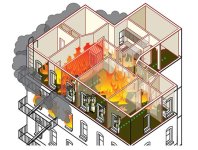
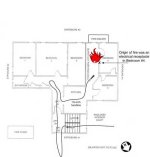
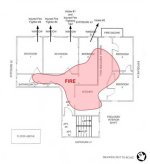
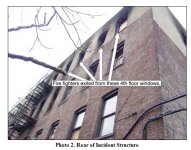
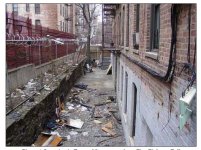
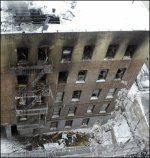
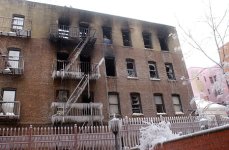

Fire Service Line of Duty Deaths
Fire Service Line of Duty Deaths. 55,425 likes · 3,538 talking about this. Memorializing and supporting the Fire Service Brotherhood, and F.O.O.L.S.
 www.facebook.com
www.facebook.com
Last edited:



